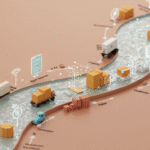Reproduced on this site under a Creative Commons licence
Original post may be viewed here
As a picture is said to paint a thousand words, I’ll (mostly) leave it to Scienceogram’s infographic to deliver the message.
However, The Center for Responsive Politics (I have no idea whether or not they have a political affiliation, they claim to be nonpartisan) estimates the cost of the recent US Congressional elections at around $3.67 bn (€2.93 bn). I found a lower (but still rather astonishing) figure of $1.34 bn (€1.07 bn) at the Federal Election Commission web-site, but suspect that this number excludes Political Action Committees and their like.
To make a European comparisson to a European space project, the Common Agriculture Policy cost €57.5 bn ($72.0 bn) in 2013 according to the BBC. Given that Rosetta’s costs were spread over nearly 20 years, it makes sense to move the decimal point rightwards one place in both the euro and dollar figures and then to double the resulting numbers before making comparisons (this is left as an exercise for the reader).
Of course I am well aware that a quick Google could easily produce figures (such as how many meals, or vaccinations, or so on you could get for €1.4 bn) making points that are entirely antipodal to the ones presented. At the end of the day we landed on a comet and will – fingers crossed – begin to understand more about the formation of the Solar System and potentially Life on Earth itself as a result. Whether or not you think that is good value for money probably depends mostly on what sort of person you are. As I relate in a previous article, infographics only get you so far.
Scienceogram provides précis [correct plural] of UK science spending, giving overviews of how investment in science compares to the size of the problems it’s seeking to solve.






